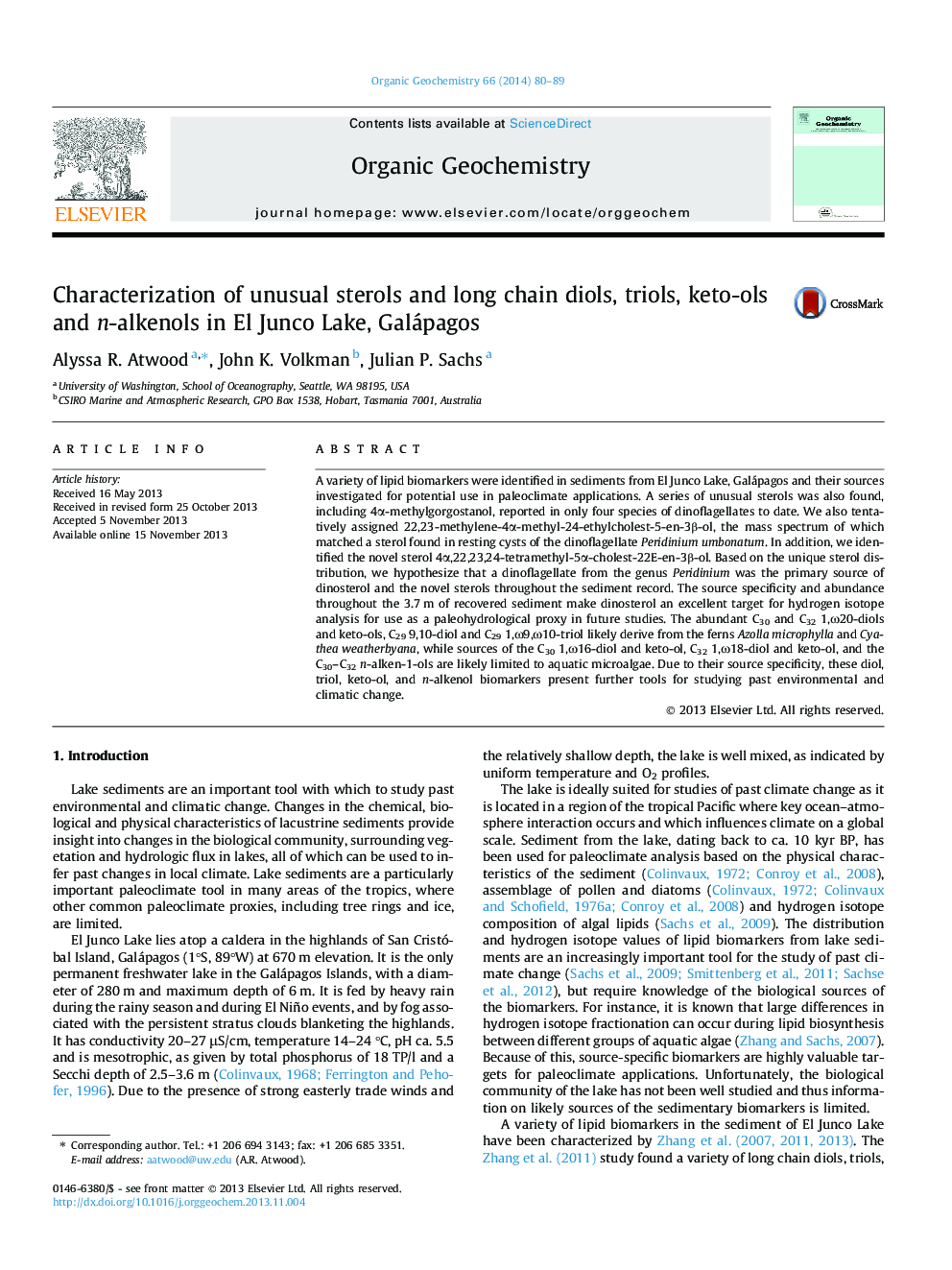| Article ID | Journal | Published Year | Pages | File Type |
|---|---|---|---|---|
| 5162375 | Organic Geochemistry | 2014 | 10 Pages |
Abstract
A variety of lipid biomarkers were identified in sediments from El Junco Lake, Galápagos and their sources investigated for potential use in paleoclimate applications. A series of unusual sterols was also found, including 4α-methylgorgostanol, reported in only four species of dinoflagellates to date. We also tentatively assigned 22,23-methylene-4α-methyl-24-ethylcholest-5-en-3β-ol, the mass spectrum of which matched a sterol found in resting cysts of the dinoflagellate Peridinium umbonatum. In addition, we identified the novel sterol 4α,22,23,24-tetramethyl-5α-cholest-22E-en-3β-ol. Based on the unique sterol distribution, we hypothesize that a dinoflagellate from the genus Peridinium was the primary source of dinosterol and the novel sterols throughout the sediment record. The source specificity and abundance throughout the 3.7 m of recovered sediment make dinosterol an excellent target for hydrogen isotope analysis for use as a paleohydrological proxy in future studies. The abundant C30 and C32 1,Ï20-diols and keto-ols, C29 9,10-diol and C29 1,Ï9,Ï10-triol likely derive from the ferns Azolla microphylla and Cyathea weatherbyana, while sources of the C30 1,Ï16-diol and keto-ol, C32 1,Ï18-diol and keto-ol, and the C30-C32n-alken-1-ols are likely limited to aquatic microalgae. Due to their source specificity, these diol, triol, keto-ol, and n-alkenol biomarkers present further tools for studying past environmental and climatic change.
Related Topics
Physical Sciences and Engineering
Chemistry
Organic Chemistry
Authors
Alyssa R. Atwood, John K. Volkman, Julian P. Sachs,
